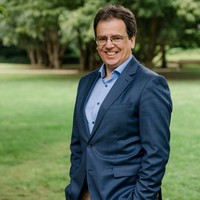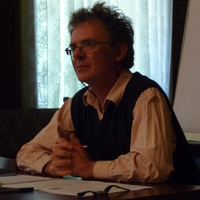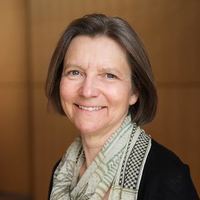
Stefan Gigacz
Now secretary of the Australian Cardijn Institute.
Completed my Ph.D. at the University of Divinity, Australia, on the role and impact of Joseph Cardijn at Vatican II.
Completed my Ph.D. at the University of Divinity, Australia, on the role and impact of Joseph Cardijn at Vatican II.
less
Related Authors
Johannes Zachhuber
University of Oxford
Galen Strawson
The University of Texas at Austin
Armando Salvatore
McGill University
Marco Hauptmeier
Cardiff University
Alejandra B Osorio
Wellesley College
Isaac Wilk Oliver/de Oliveira
Bradley University
Cristiana Facchini
Università di Bologna
Brandon Gallaher
University of Exeter
Shaun Gallagher
University of Memphis
Vera Shevzov
Smith College
InterestsView All (33)










Uploads
Website by Stefan Gigacz
Papers by Stefan Gigacz
It shows how it developed from the Sillon's method of democratic education based on Aristotelian virtue ethics.
It shows how Cardijn developed his method on the basis of his Proudhonian Three Truths dialectic of faith, experience and method, his baptismally-based conception of education, service and representation, and his ecclesiological trinomial of Church, laity and clergy.
This speech foreshadowed and prepared the path for the Vatican II conception of lay apostolate in Lumen Gentium and Apostolicam Actuositatem and the see-judge-act format adopted by Gaudium et Spes.
Two years earlier, Leo XIII had published his landmark 1891 encyclical, Rerum Novarum, on the “worker question.” And in 1892 he had specifically addressed the French people in his encyclical Au milieu de sollicitudes, which called on them to abandon the mirage of restoring the pre-Revolutionary monarchy and instead work to animate the recently established French Republic with Christian values.
Inspired by Leo XIII, Sangnier and his young colleagues set out to educate their student peers and reach out to Paris’s burgeoning population of young workers. Abandoning the “doctrinal” approach of traditional study circles, they began by studying the facts revealed in social enquiries tackling issues of concern. Meditating weekly on the Gospel, they sought to develop action responded to the needs they had identified.
And when they graduated from Stanislas and went to work and study elsewhere, they took their ideas and methods with them. In 1898, they launched a campaign to promote the development of more study circles. Soon these study circles adopted the name of their bimonthly magazine, Le Sillon, (The Furrow).
These “Sillonists” encapsulated their task of social education in a new definition of democracy as the social system that maximised “the conscience/consciousness and responsibility” of each person.
But the Sillon’s ideas and methods were too radical for their time, causing Leo XIII’s successor, Pius X, to issue another letter to the French bishops, condemning the Sillon’s conception of democracy and calling on Sangnier and his colleagues to resign. Loyal to the Church, they did indeed winning admiration for their sacrifice.
This sacrifice was not in vain, however, because across the border in Belgium, their example had inspired a dynamic young priest, Joseph Cardijn, who adopted and developed the Sillon’s methods, transforming them into the iconic see-judge-act method of the Jeunesse Ouvrière Chrétienne or Young Christian Workers, the first of what would become the “Specialised Catholic Action” movements.
Later still, Pope John XXIII, who had heard Marc Sangnier speak in 1904, would endorse this method in his 1961 encyclical, Mater et Magistra. And Vatican II Council Fathers would adopt the method for the redaction of the Pastoral Constitution on the Church in the World of Today, Gaudium et Spes, while the Decree on the Apostolate of the Laity, Apostolicam Actuositatem, promoted the see-judge-act as a method of lay formation.
And while no document of Vatican II mentions the word “democracy,” we find the Sillon’s “consciousness-responsibility” binomial embedded in the many references in Gaudium et Spes to raising awareness and promoting a sense of responsibility.